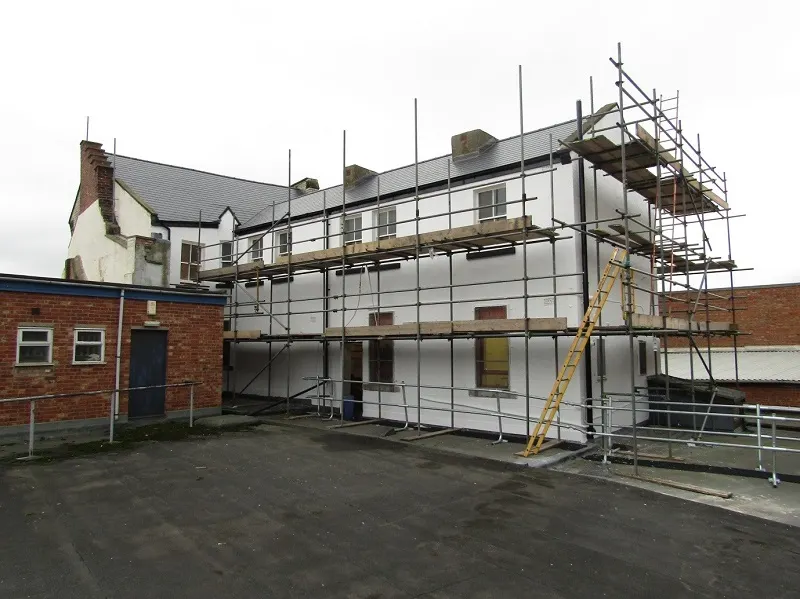The schedule of dilapidations is a document that is created by a dilapidations surveyor who details all of the repairs that a tenant is responsible for doing themselves in a property and under the obligation of their lease. These can include anything from redecoration, reinstatement or repair of the premises and happened most of the time by abuse of the property, bad repairs or no repairs at all. If any of these repairs or changes are not done that is considered a breach of the lease and the landlord can issue a Dilapidations claim against the tenant.
These Dilapidation claims can be issued either whilst the lease is still live or at the end of the lease. This is what you should know about Schedules of Dilapidations, your obligations, dispute resolution, and how to prevent Dilapidations claims.
Before you sign a new lease, our panel of dilapidations surveyors based in London can advise you on the dilapidations clause in the lease and its implications in Plain English. Should you wish to alter your rented property, they can also create a Licence to Alter for your landlord in minute detail and resolve disputes where necessary. When served with a Schedule of Dilapidations, your surveyor will explain your responsibilities, costs, flag up the scope for dispute claims, and also help you compose a formal response. If the dispute can only be resolved by a judge, your surveyor can appear as your expert witness in court to ensure settlements are reached.
If it’s your tenant’s responsibility to fix any damages to your property, then you need to create a Schedule of Dilapidations, but how can landlords and tenants achieve a fair outcome?
In the event that your tenant is liable for the restoration of alterations and repairing of covenants outlined in the lease, your surveyor can draft an up-to-date, meticulous and comprehensive Schedule of Dilapidations on your behalf. In such instances, they can also negotiate with the tenant’s surveyor to settle the case amicably.
Should the tenant challenge your dilapidations claim, your surveyor can act as your professional representative and even provide expert witness to support you in court.
Although the schedule is generally necessary for the tenant’s protection, both the landlord and the tenant benefit from preparing it. Having an agreed record of the condition of the property at the start of a lease can prevent arguments when the lease comes to an end, as the schedule can be referred to as a reference. In addition, it makes it clear what the tenant’s maintenance obligations are, so they can be sure they are looking after the property properly.
Before or after the lease term, the surveyor will explore the entire building to ensure the tenant meets their obligations. If tenants choose to do without a Schedule of Condition, they run the risk of dealing with chargeable repairs that are the landlord’s obligation. Likewise, it is essential for landlords to produce a comprehensive Schedule of Condition in order that the tenants comply with the terms of the lease. For assistance in the preparation of this vital yet frequently neglected document speak to one of the RICS Chartered Surveyors.
Usually, a landlord keeps a chartered surveyor at the ready toward the end of a lease, who can really dig into the property and draw up a Schedule of Dilapidations if they need to. It can be served before the end of the lease; however, they ought to give the tenant an opportunity to do the repairs or reinstatements themselves if they want to. Chartered surveyors assist both tenants and landlords with the following:
This Schedule of Dilapidations document will need to clearly state which breaches of the lease have occurred and propose what works are needed to resolve the issue. Depending on the timing of the Schedule of Dilapidation being issued, it may also include costs, and any loss of rent while the repairs are being done. If there is still no compliance from the tenant, the landlord can claim damages via a Terminal Dilapidations claim.
Dilapidations claims can contain the detail of landlord’s loss from the dilapidation such as lost of rent, the lower value of the property can also from that. Section 18 of Landlord & Tenant Act 1927 will also apply where a formal valuation will need.

The landlord’s claim should conform to certain provisions, which pertain to costs, responsibilities, augmentations and financial implications, including the following:
Should the worst come to pass, and you are hit with a Schedule of Dilapidations, do make sure that you respond promptly and thoroughly.
Consult your dilapidations surveyor to determine which repairs are needed and pertinent according to the lease provisions. Complete any necessary repairs, replace any alterations, reinstate the property to the shape it was at the date of commencement to avoid going to the next level.
If the landlord still believes that you violated your lease and did not do the necessary repairs to deliver the property back in good condition, the landlord may file a lawsuit claiming for damages.
Your surveyor should assist you with any counter-argument and limit the claim according to the Dilapidations Protocol (Pre-Action Protocol for Claims for Damages in Relation to the Physical State of Commercial Property at Termination of Tenancy).
It is always important to have a good idea of what responsibilities you have as a tenant before you sign or renew a lease so you are not held accountable for the condition of the premises.
Before you sign, carefully read through the terms of the lease agreement and, if you find anything that seems unclear or that looks like a claim for full repair, get in touch with a properly qualified Chartered Surveyor who can explain what you are about to sign and help you avoid future financial pain.
If the property is a Listed Building, take extra care. They’re often plagued by problems like windows that don’t open, constant roof leaks and damp and condensation issues that cause extra damage, none of which is your fault.
If you decide to proceed with renting the property, have your surveyor prepare and the Landlord agree a Schedule of Condition, before you enter into the lease. This provides an official detailed record of the state of the property before the lease commences and can provide tangible evidence in the event of a dispute.
Store all documentation in a secure location, and make sure you employ good upkeep while residing in the property.
Conducting regular property inspections during your tenants’ lease period can be a practical way to verify that your tenants are abiding by the terms of their lease and remaining attentive to maintenance issues.
The expectation of periodic inspections should be in writing in the lease agreement and can be performed by the owner or management staff with tenant permission.
If any issues are found, they should be communicated effectively to tenant, and any repairs needed should be requested in writing as soon as possible.
If the issue results in lasting damage to the property and, the Landlord’s reversion or his ability to secure a new lease or borrow money could be damaged, it would be wise to ask your surveyor to prepare an Interim Schedule of Dilapidation which will enable you to demand the tenant to carry out repair work immediately.
Furthermore, there is the Terminal Schedule of Dilapidation in addition to the Interim Schedule of Dilapidation that can be served at any time.
The Terminal Schedule of Dilapidations is so named as it is issued within the last 18 months of the lease, and is designed to preclude the depreciation in the value of the Landlords property, due to the said breaches.
This may include: repairs, making good, removal of the tenant’s fixtures and alterations, redecoration, renewal of worn out parts of the building etc. This helps both tenant and landlord know their repair obligations at the outset, so the tenant can do the works required in time and avoids dispute. The tenant will also wish to know the condition of the building at the outset so as to avoid being charged with repair when he is not responsible.
If repairs or corrective actions are not performed by the lessee, the lessee will be in breach of the conditions of the rental contract under section 146 of the Law of Property Act 1925. The landlord will make a Final Schedule of Dilapidations, which is essentially a kind of fiscal indemnification, since the lessee will no longer be able to enter the property.

A Dilapidations Schedule is a legal document that assists in the enforcement of a lease; ensuring a tenant abides by the rules of the lease and therefore returns the property to the landlord in good order. This documentation also allows tenants the opportunity to contest allegations of dilapidations, therefore protecting both sides during any property- related matter.
To discuss your specific needs regarding a lease or drawing up a Schedule of Condition or Dilapidations, call our professional team today.





